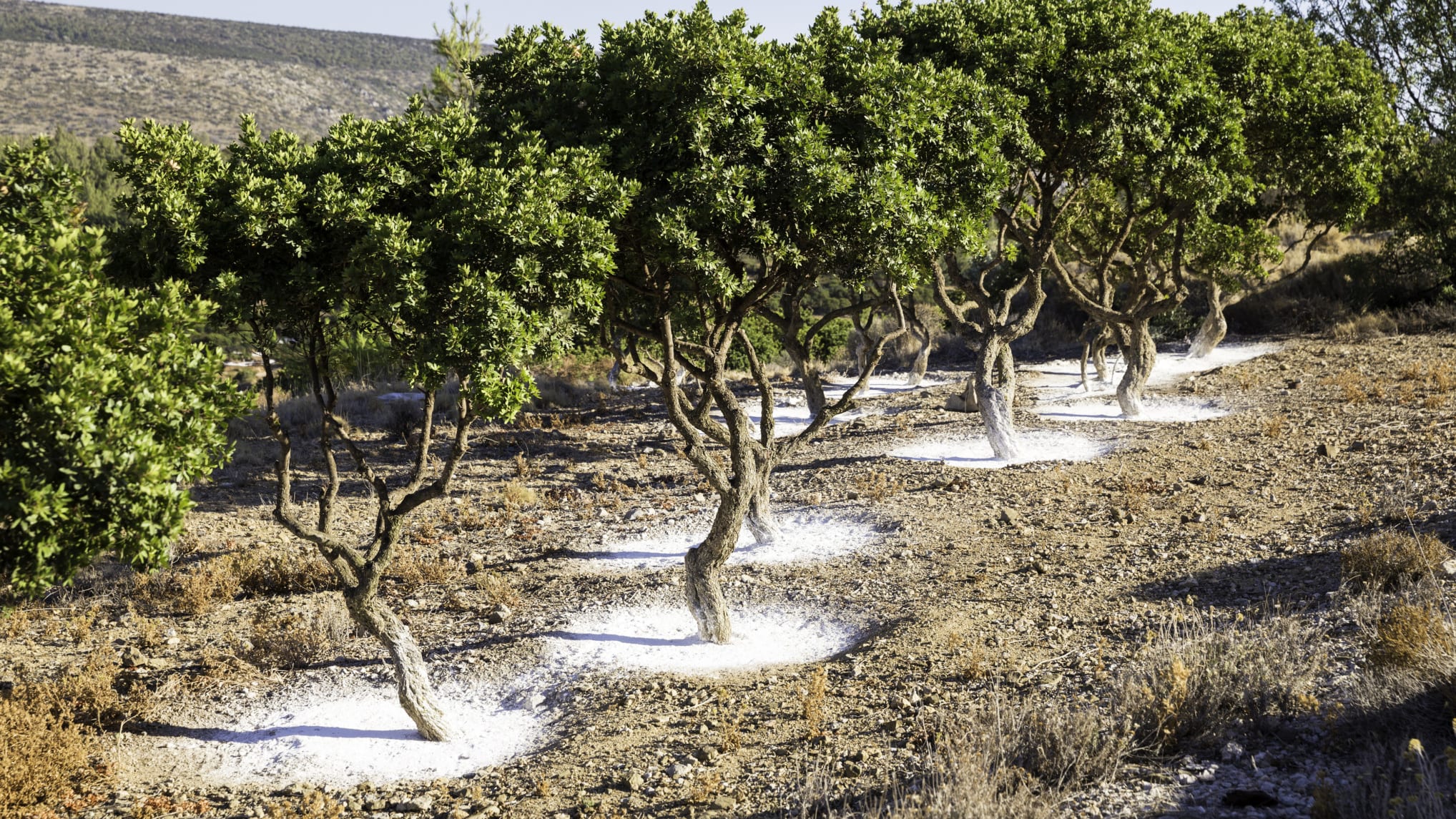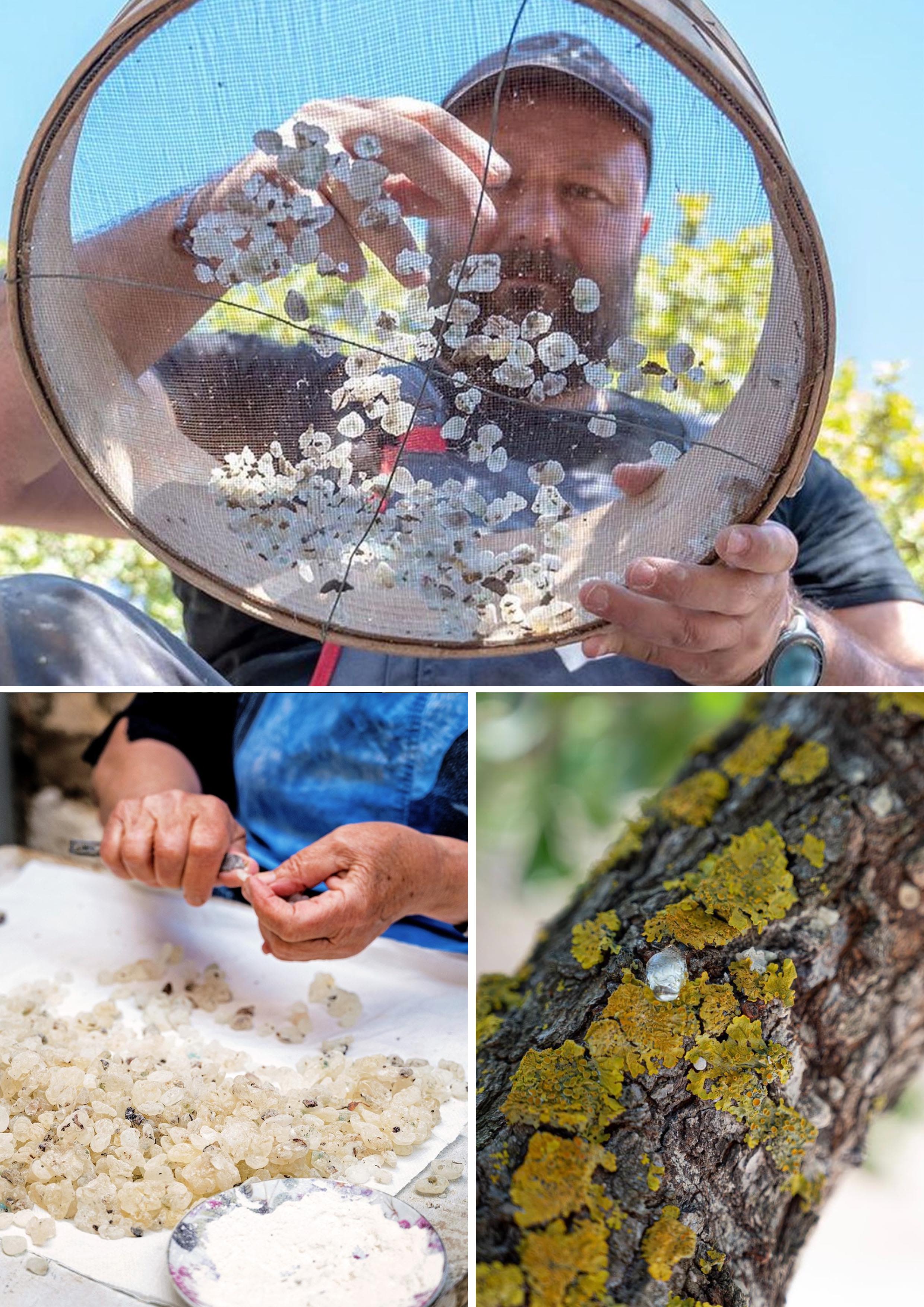

Mastic Trees
To understand the essence of what Mastiha is all about, you must look at the prime ingredient – the resin from the mastic tree (Pistacia lentiscus var. Chia).
This evergreen tree, native to the Mediterranean region, holds the secret of Mastiha in its distinct pine-like and highly aromatic teardrop-shaped resin.
These petite trees, despite their diminutive stature, take a staggering 30 years to mature before they can be harvested. Moreover they are found exclusively on the Greek island of Chios.
Axia Spirit’s CEO, Tony Chvala further explains the scarcity of the resin. “Mastiha can only be harvested in ‘Mastihohoria’ (Mastiha villages) in the southern end of Chios, where undersea volcanoes affect soil and micro-climate to create a unique terroir. Attempts to farm the tree in other parts of Greece and the Mediterranean have all failed to yield these precious tears.”
It's not an Appellation protecting national interests, it’s the quirks of subterranean terroir that makes it incredibly difficult to reproduce anywhere else.
Despite this hyper specific and minute geographical origin, over the centuries, mastic gum has proven itself to be a versatile resource, being used in medicine, cuisine, and cosmetics across the globe. Historical records from ancient Greece highlight its use in soothing toothaches and alleviating throat discomfort.
In contemporary usage, mastic gum serves various purposes. It’s still a frequent addition to products like chewing gum and toothpaste due to its inherent antibacterial qualities and in our area of special interest – a liqueur that might well be the embodiment of summer on the Aegean Sea.

But the challenges don't just stop there.
The scarcity of mastic gum is not only due to there being only hundreds of these trees remaining and the limitations of where they can grow, but also due to the complex and labour-intensive process of cultivation and harvesting.
Chvala explains that it involves specialist skillset, and with more than the current crop at stake “Carried out by hand, Mastic gum harvest is a year-long intensive process, by members of the growers’ collective charged with preserving the trees for future generations”.
From tree resin to spirit
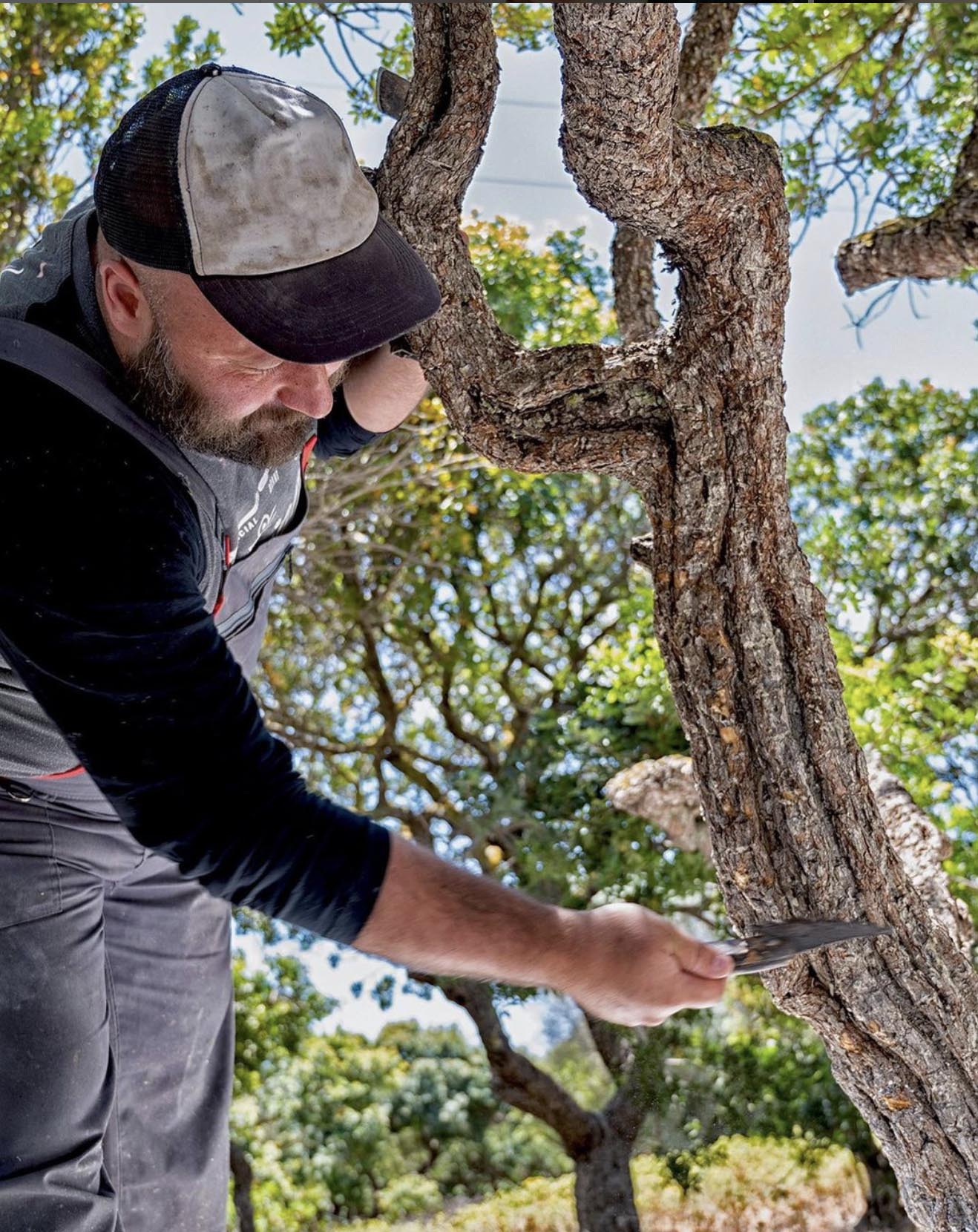
Once the crystals are ready, they begin their journey to become liqueur. The hardened resin crystals are steeped in neutral alcohol and left to macerate, infusing their unique flavour into the spirit. It takes time and the amount used is a critical part of the end profile. Too much and it’s overly sappy (and expensive), too little and the aromatics are underwhelming.
After an adequate period, this mixture is then distilled, capturing the fragrant essence of the mastic tree. Typically, the resulting clear spirit is then diluted and sweetened before being bottled, resulting in a liqueur with an alcohol content of around 15-20%.
Good Mastiha is a genuinely unique liqueur. Just as with juniper, mastic resin has a spectrum of flavours and there’s many facets a producer can choose to showcase.
It swings from earthy pine, to cedar wood, into sappy cypress and herbal-tinged citrus notes. All from just the resin and the way it’s been infused and how that’s been distilled.
Pick up any random bottle and you can expect to be greeted with a sweet, somewhat piney aroma – a heady nod to its botanical origins. As you take a sip, the full spectrum of its taste profile unravels, as does the typical sweetness. Sugary, resinous flavours of herbs, pine and cedar are the typical prominent notes, but as you step up the echelons of quality, fresh cut grass, subtle floral and citrus notes are often discernible too.
Is it destined for obscurity, or will a modern take prove to be the tonic needed?
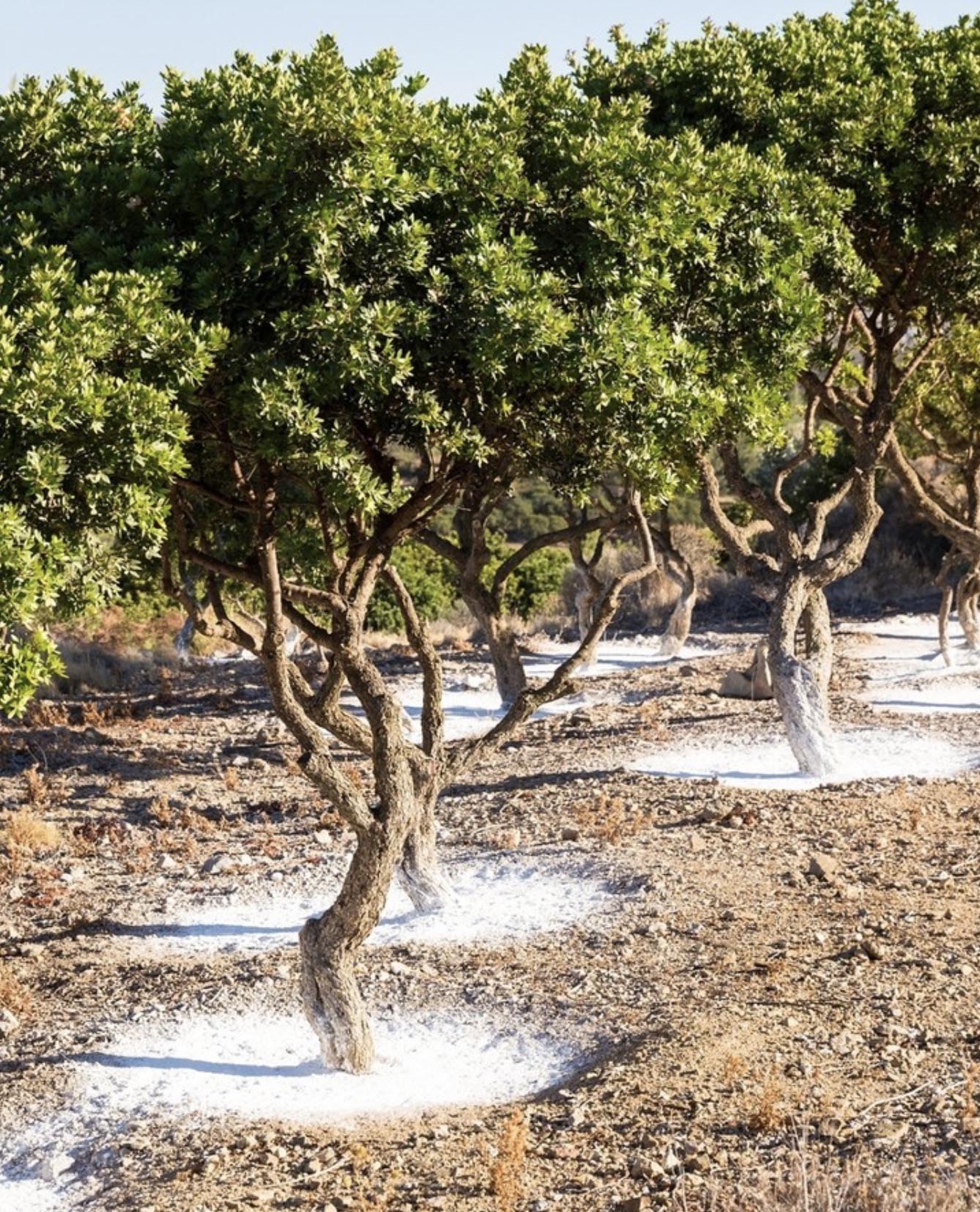
Traditionally, Greeks enjoy Mastiha in a multitude of ways – straight up or on the rocks as a digestif, mixed into cocktails, or paired with food. Sipping it on the back of a boat with your feet in the water and salty hair from a day in the ocean is one of the great pleasures of spending summer in the region.
Despite its unique allure and intrinsic ability to transport those familiar with it back to Greek islands, Mastiha has faced significant challenges in achieving global popularity.
Chief amongst it has been a lack of education around what it is, as well as the lack of a star brand willing to pave the way for it (with the resources to back their ambition).
That remains true today - in a world where drinkers constantly seek new experiences, the relative obscurity of Mastiha and its distinct taste will need significant marketing efforts to capture a wider audience's curiosity.
In my opinion, its anonymity is also due to what makes it so special in the first place – Mastiha’s exclusive geographical dependence on Chios and it’s currently limited crop of active trees limit its production. Scalability is an unenviable challenge.
Times are changing however, and relative new brand Axia (launched in 2021) is gaining attention and spreading the Greek gospel. ”My goal is to bring a Greek born spirit to the international stage that has a unique and refreshing taste profile to the masses. Axia is not a traditional Mastiha (sweet liqueur), rather it is an extra dry, 40% ABV spirit with less sugar. “
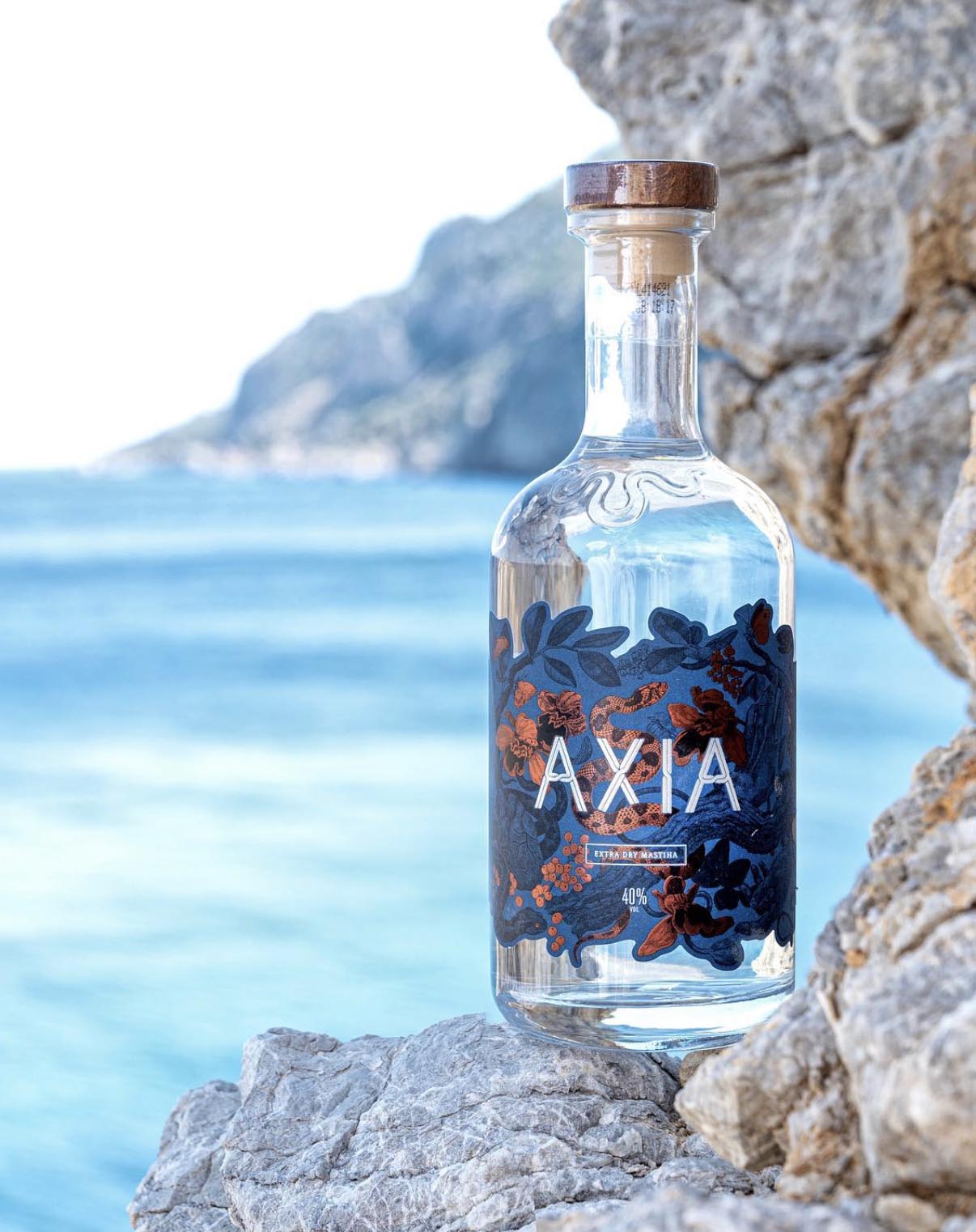
Will this contemporary re-imagining be key to unlocking the fortunes of Mastiha?
It’ll certainly help that’s for sure and any inroads into raising the popularity of the drink can only be a good thing for a liqueur (or in Axia’s case, a botanical spirit) that has long transfixed those who encounter it, yet remained stubbornly elusive to all those beyond the Mediterranean.
There's only upside for the next few years, but perhaps, Axia's strongest feature will be its eventual limitation when it comes to raising the category as a whole.
Axia is dry as a spirit and high ABV compared to the more traditional Mastiha liqueurs. This makes it easy to drink with soda or tonic as you would a gin. It makes a enthralling Martini. It’s versatile. But, it’s also not representative of the majority of Mastiha.
It’s akin to comparing a citrus vodka made from Amalfi Lemons to Limoncello. Same ballpark and helps to showcase the extraordinary nature of the ingredient, it’s much easier to find a use for when making cocktails at home but ultimately, it’s a different concept. Axia’s potential success is just as likely to lead to it simply being considered as its own entity, known for being an oddball Greek spirit, as it is of stemming from of a style of liqueurs and dragging them into more mainstream waters.
For now though, it’s doing both and it deserves the plaudits and attention it’s getting.
For those curious about this wonder resin and want a little bit of Greek magic to mesmerise the their mouths one sip at a time – it’s a great way to dip into that world.


